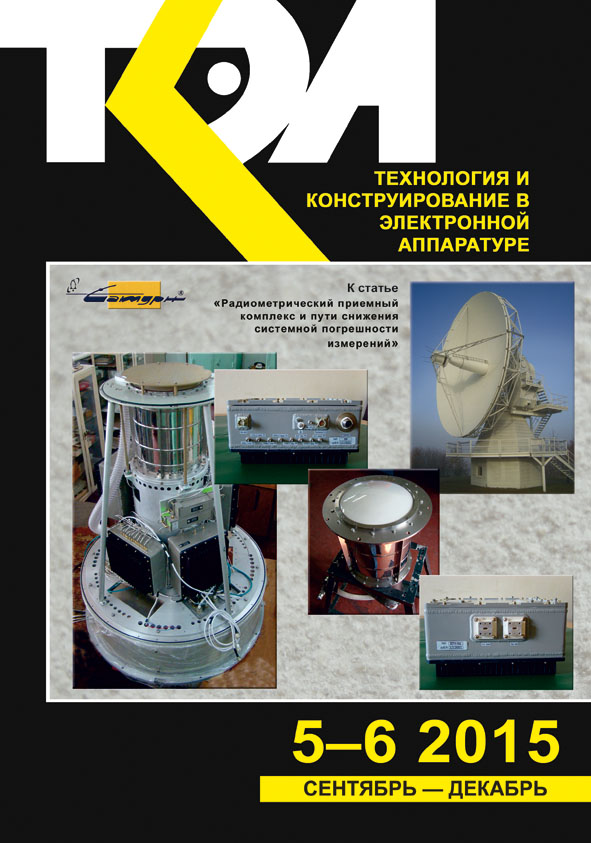Annealing effect on I-V characteristic of n-ZnO – p-InSe heterojunction
Abstract
The article is devoted to studying of influence of vacuum low-temperature annealing on the electrical and photoelectric characteristics of n-ZnO-p-InSe heterostructure.
Indium monoselenide (InSe) is a semiconductor of the A3B6 group of layered compounds. The basic unit consists of two planes of metal atoms sandwiched between two planes of chalcogen atoms (Se-In-In-Se). The absence of dangling bonds on InSe cleaved surface makes it possible to use this semiconductor as a substrate for fabrication of heterostructures based on semiconductor materials with different symmetries and lattice spacings. Zinc oxide (ZnO) is the most suitable material for window materials and solar cells buffer layers application due to its marvelous transparency in the range of visible region.
InSe single crystals were grown by the Bridgman technique from a nonstoichiometric melt and characterized by a pronounced layered structure along the whole length of a sample. ZnO thin oxide film was formed on freshly cleaved van der Waals surface of InSe layered crystal. n-ZnO-p-InSe heterostructure was prepared by the method of high-frequency magnetron sputtering. Sensitivity spectral areas were identified by MDR-3 monochromator with a resolution of 2.6 nm/mm.
The current-voltage characteristics of the n-ZnO-p-InSe heterostructures showed a clearly pronounced diode character. In the forward bias of the initial samples, the diode factor had the value 3.7 at room temperature. It is shown that vacuum low-temperature annealing reduces shunt currents of the heterojunction, which is reflected in the decrease in the values of n from 3.7 to 2.7.
References
Ellmer K., Klein A., Rech B. Transparent conductive zinc oxide: Basics and applications in thin film solar cells. Springer, 2008, 446 p.
Song D., Aberle A., Xia I. Optimisation of ZnO:Al films by change of sputter gas pressure for solar cell application. Appl. Surf. Sci., 2003, vol. 195, no. 3, pp. 291-296.
Shtepliuk I., Lashkarev G., Lazorenko V., Ievtushenko A. [Technological and material science aspects of obtaining light-emitting devices based on ZnO]. Physics and chemistry of solid state, 2010, vol. 11, no. 2, pp. 277-287. (Ukr)
Jagadish C., Pearton S.J. (Eds.) Zinc oxide bulk, thin films and nanostructures: processing, properties, and applications. Amsterdam, Elsevier, 2006, 600 p.
Kovalyuk Z.D. [Features of physical properties of layered crystals]. In book: Physical basis of semiconductor material. Kiev, Naukova dumka, 1986, pp. 7-9. (Rus)
Milnes A.G., Feucht D.L. Heterojunction and metalsemiconductor junction. New York, Academic Press, 1972, 408 p.
Katerynchuk V.M., Kudrynskyi Z.R., Khomyak V.V., Orletsky I.G., Netyaga V.V. [Properties of anisotype n-CdO — p-InSe heterojunctions]. Physics and chemistry of solid state, 2013, vol. 14, no. 1, рр. 218-221. (Ukr)
Katerynchuk V.M., Kudrynskyi Z.R., Kovalyuk Z.D. Photopleochroism coefficient and its temperature dinamics in natural oxide — p-InSe heterojunctions. Semiconductors, 2014, vol. 48, iss. 6, pp. 776-778. http://dx.doi.org/10.1134/S1063782614060153.
Brus V.V., Ilashchuk M.I., Khomyak V.V., Kovalyuk Z.D, Maryanchuk P.D., Ulyanytsky K.S. Electrical properties of anisotype heterojunctions n-CdZnTe/p-CdTe. Semiconductors, 2012, vol. 46, iss. 9, pp. 1152-1157. 10.1134/S1063782612090059.
Lampert M.A., Mark P. Current injection in solids. New York, Academic Press. 1970, 351 p.
Copyright (c) 2015 Kovalyuk Z. D., Katerynchuk V. M., Kudrynskyi Z. R., Kushnir B. V., Netyaga V. V., Khomyak V. V.

This work is licensed under a Creative Commons Attribution 4.0 International License.

